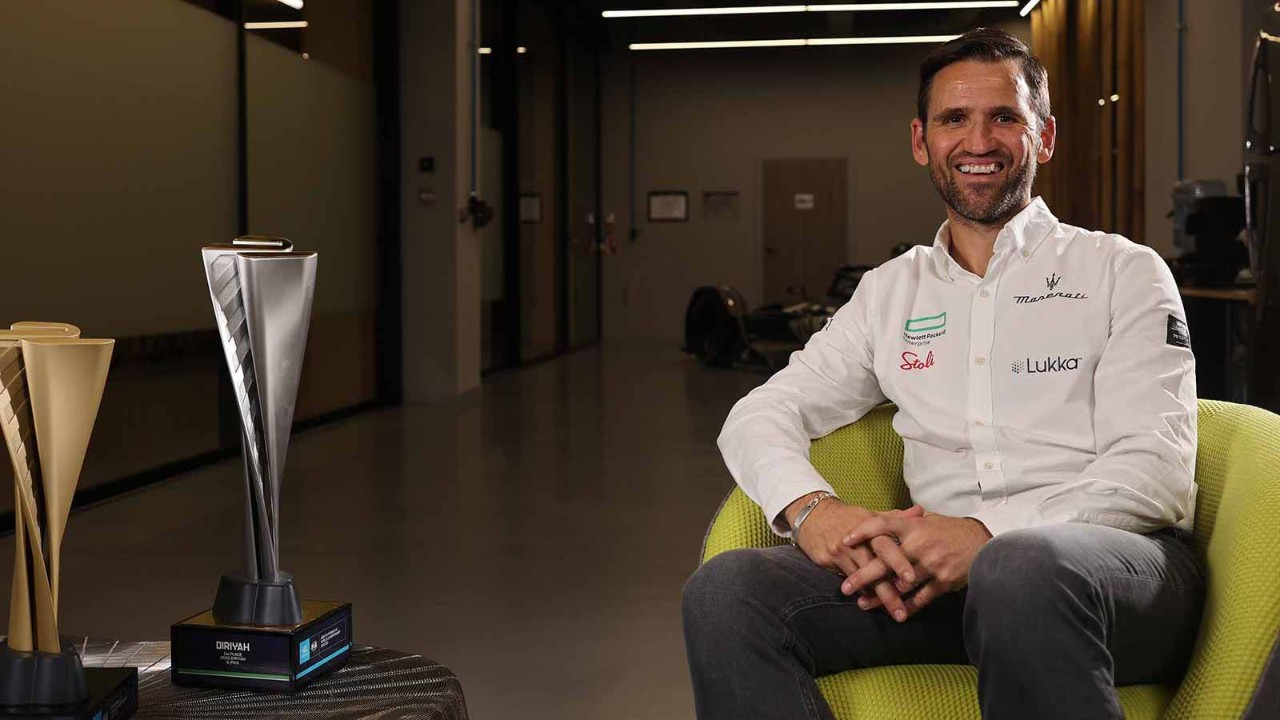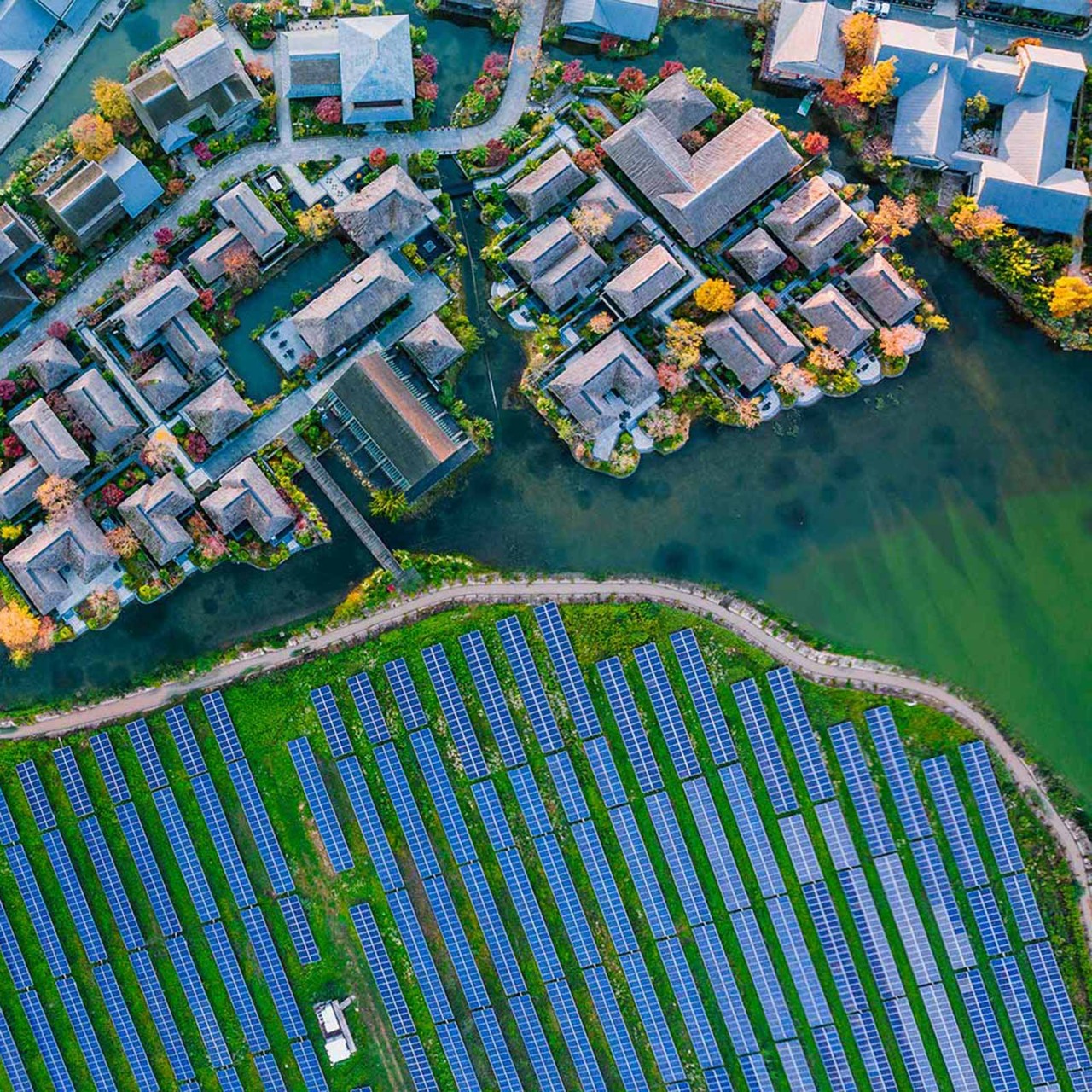
Sitting in a functional office surrounded by exposed steel girders, you would never guess that John San Vicente FCCA was actually in the heart of glamorous Monaco. But, as CFO of Formula E team Maserati MSG Racing, this is where he spends his time when not based at home just outside Cambridge.
The location is not just a reflection of the luxurious image conjured up by the Maserati name and high-energy motor racing; the MSG part of the team name stands for Monaco Sports Group, the organisation that backs the team that, under the name of ROKIT Venturi Racing, clinched second place behind Mercedes in the 2022 Formula E championship.
But with Maserati now on board as title sponsor, and supplier of the crucial powertrain, the team is hoping to go one further and claim the drivers’ and teams’ titles in the new season, which kicks off in January 2023 in Mexico City.
‘We are not backed by a large manufacturer, so our achievements so far have been massive’
The 2023 season will also be given extra spice with the arrival of a new car design, Gen3, with which all the teams work, and which promises to combine hardware and software in the most dynamic of ways to produce speeds of up to 200mph.
‘We are very hopeful that we are going to challenge for the drivers’ and teams’ titles,’ San Vicente says. ‘That’s where we want to be, that’s our target and that’s our expectation. We are not backed by a large manufacturer, so our achievements so far have been massive – you wouldn’t get that in Formula 1.’
Budget constraints
But what you don’t get in Formula E is a massive budget. While costs for Formula 1 will be capped at $135m for the 2023 season, Formula E teams have to get by on less than a tenth of that – €13m (US$13.5m) – excluding marketing costs and driver salaries. The cap, a relatively new innovation, came into effect from October 2022.
‘We need to control everything, providing a timely, accurate and transparent analysis of costs’
Formula E in numbers
200
The top speed of the new Gen3 Formula E cars, in mph
60
The percentage of the race that the cars can cover with a fully charged battery (the remaining energy is derived from regenerative breaking)
€13m
The cost cap for a Formula E team
17
The number of races in the 2023 Formula E season
‘In some ways it is easy to deal with the cap from an accounting point of view because virtually everything is included and will include driver salaries in the future as well,’ says San Vicente. ‘But it is also difficult because we need to control everything, providing a timely, accurate and transparent analysis of costs.’
The cost gulf between the two formulae is in part down to the lower research and development costs incurred in the electric series. Every team is supplied with the same vehicle, the only real differences being the power unit and, of course, the human element of the driver and strategy.
This is always an important area, but more so in Formula E, as the cars only start off with 60% of the battery power necessary to complete the race (the remainder of the energy is derived from regenerative breaking during the race). This is where energy management software can make the difference between winning or a DNF (did not finish).
Rounded exposure
Racing and fast cars have featured heavily in San Vicente’s career. His first accountancy role was with East Anglian accountancy firm Price Bailey – working in its Newmarket office, he was exposed to racing of the four-legged variety. This was where he began his ACCA qualification, an option he pursued because he felt it gave him a more rounded exposure and was more relevant to industry.
He subsequently joined Mercedes-Benz in its UK national sales company, producing management accounts and advising on planning, forecasting and pricing. It was also where he worked with Russell Braithwaite FCCA, who went on to become CFO at the Mercedes F1 team.
‘Within ESG, sustainability is the key value. We live and breathe it.’

On film
However, after 11 years with the German luxury car company, San Vicente opted to join high-street bank Santander, a nod to his Spanish father’s roots, where he worked on asset valuations for personal loans and mortgages. He joined just after the financial crisis.
‘During that period the analysis, accuracy and processes of impairment valuation became very significant,’ he says. ‘The importance of this area within the organisation was elevated substantially because of the hits the sector had taken. The bank was being extremely prudent with its loss provisioning.’
However, a year and half later, he was contacted by his old Mercedes boss Braithwaite, who lured him to Dubai to help set up the finance function for the group in the Middle East. This was then followed by what San Vicente describes as the ‘most challenging but rewarding’ role, where he set up the branded finance arm of the group, a new concept for the region. This role saw him pitching the new service to the CEOs of banks in the region.
Returning to the UK for family reasons, San Vicente worked briefly with Energy Developments UK, a company that extracted gas from landfill sites that in turn was used to generate electricity to sell back into the national grid. It was at this time that the wolf came knocking at his door, quite literally.
Opportunity knocks
Susie Wolff, who at the time was team principal at Venturi, was in the market for a CFO and offered the role to San Vicente. Wolff left ahead of its tie-up with Maserati after guiding the team to its most successful season to date – not only was it second in the teams’ championship, but driver Edoardo Mortara came third in the drivers’ standings. This season, under the new Maserati livery, Mortara will be joined by 25-year-old Maximilian Guenther, widely touted as ‘the future of FE’.
Looking to the future, San Vicente is all too aware of the role that the electric series can play in the wider sustainability agenda. ‘Within ESG, sustainability is the key value,’ he says. ‘We live and breathe it.’
He also points to the role his team is playing in promoting diversity and inclusion. ‘We are the most gender diverse team in the paddock – five out of eight of the senior leadership team are women,’ he says. ‘And we use our unique global platform to promote causes that matter to us such as our Pride campaign.’
He is also convinced the future is bright for the series as well, having suffered a setback during the pandemic. The races are city-centre based, so were unable to take place due to the restrictions in place at the time. But interest is growing again, with broadcasters and sponsors committing to the cause, showing that sometimes electric dreams can come true.
CV
2020
CFO, Maserati MSG Racing, Monaco/Cambridge
2017
Director of finance and commercial, Energy Developments, UK
2013
Head of finance programmes (Middle East), Daimler Financial Services, Dubai
2011
Revenue controller, commercial vehicles (Middle East), Daimler Middle East, Dubai
2010
Finance professional, Santander, UK
2007
Mercedes-Benz Cars brand controller, Mercedes-Benz UK
1999
Various roles, Daimler Chrysler UK
1997
Price Bailey, Newmarket, UK

